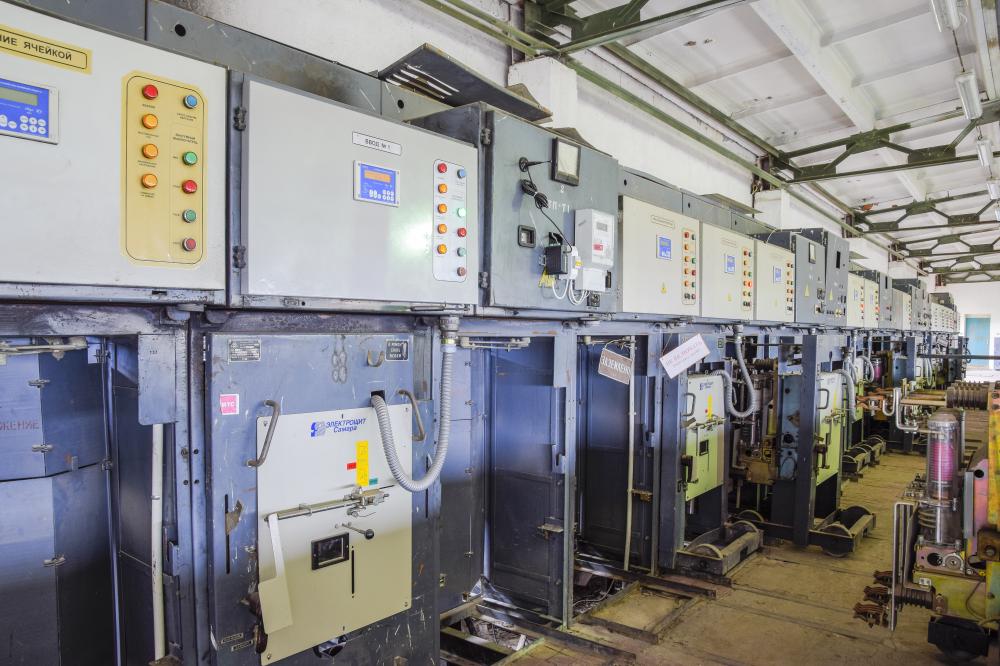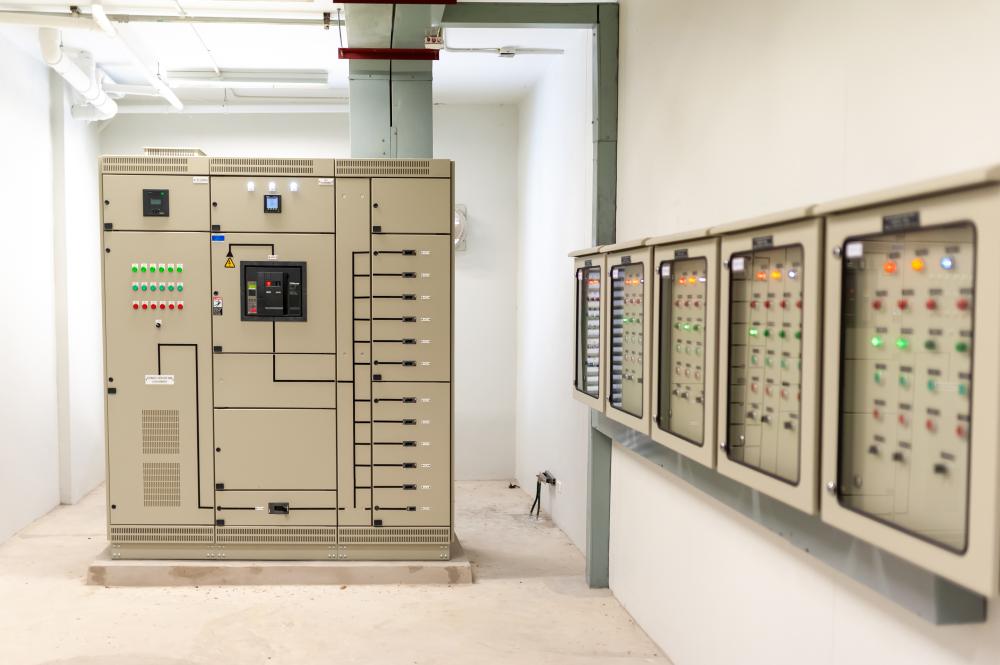
Importance of Power Protection for Commercial Buildings
Commercial buildings rely heavily on consistent and reliable electrical supply to maintain operations. Power Protection for Commercial Buildings is crucial as interruptions can lead to significant financial losses. By implementing robust power protection systems, businesses can safeguard against power surges, outages, and equipment failures.
Over my 20 years in the industry, I’ve seen firsthand how proper power protection can prevent disruptions. Our solutions at Energy Control Systems not only protect assets but also ensure business continuity. This reliability is key to maintaining productivity in a competitive market.
Key Features of Effective Power Protection Solutions
Effective Power Protection for Commercial Buildings involves several critical components that work together to provide a seamless safety net.
- Surge Protectors: These devices shield electrical systems from voltage spikes and transients.
- Uninterruptible Power Supplies (UPS): These provide backup power during outages, allowing for orderly shutdowns or continued operation.
- Voltage Regulators: They maintain a consistent voltage level, preventing damage from fluctuations.
Choosing the right combination of these elements depends on specific business needs. Our team customizes solutions to each client’s requirements, ensuring optimal protection.
How to Implement Power Protection for Commercial Buildings
Implementing Power Protection for Commercial Buildings involves a strategic approach to ensure comprehensive coverage. Follow these steps for a successful implementation:
- Conduct a Site Assessment: Evaluate the building’s existing electrical infrastructure and identify potential vulnerabilities.
- Design a Customized Plan: Develop a tailored power protection strategy that considers the building’s unique needs and operational requirements.
- Install Protective Equipment: Install and configure surge protectors, UPS units, and voltage regulators according to the plan.
- Test and Monitor: Regularly test the system’s effectiveness and monitor it for any issues or required adjustments.
What Are the Common Challenges in Power Protection?
Power protection in commercial settings often faces several challenges, including:
First, cost considerations can lead some businesses to delay or scale back on protection measures, risking greater losses. Second, the compatibility of new systems with existing infrastructure can complicate installations. Additionally, lack of awareness about potential risks might result in underestimating the importance of comprehensive protection.
From my experience, tackling these challenges involves education, planning, and choosing adaptable solutions. Offering flexible and scalable power protection plans helps overcome these hurdles.
Benefits of Investing in Power Protection for Commercial Buildings
Investing in Power Protection for Commercial Buildings offers numerous advantages that directly impact business operations:
Reduced downtime is one of the most significant benefits, as power protection systems ensure ongoing productivity. Furthermore, they extend the lifespan of electrical equipment by shielding them from damaging surges and fluctuations. Businesses will also find that operational costs decrease over time thanks to fewer repairs and maintenance requirements.
Ultimately, investing in power protection is not just a preventative measure; it’s a strategic decision that aligns with long-term financial health and business resilience.
What Qualifies as a Power Protection for Commercial Buildings Emergency?
A power protection emergency in a commercial building is typically defined as any situation causing a sudden and unexpected interruption in the electrical supply, leading to potential damage to systems or disruption of operations.
Such emergencies can include severe power surges, prolonged outages, or equipment malfunctions. Responding quickly to these situations is critical to minimize impact. Ensuring a well-maintained power protection system can significantly reduce the risk of such emergencies.

What are the most common misconceptions about power protection in commercial buildings?
One of the most common misconceptions is that power protection is only necessary for businesses with high-tech equipment. In reality, all commercial buildings can benefit from power protection systems. The misconception stems from a lack of awareness about how power surges and outages can affect everyday operations. Another misunderstanding is that power protection systems are prohibitively expensive. However, when you consider the potential costs of equipment damage and downtime, investing in these systems is often more cost-effective in the long run.
How can businesses ensure their power protection solutions remain effective over time?
Businesses can maintain the effectiveness of their power protection solutions by regularly testing and monitoring their systems. This involves checking the performance of surge protectors, UPS systems, and voltage regulators. It’s also important to stay informed about technological advancements in power protection and be willing to update or upgrade equipment as necessary. To illustrate, imagine a business owner who conducts regular reviews of their systems and opts for the latest UPS technology. This proactive approach ensures they are always protected against new power threats.
What advanced strategies can be implemented to enhance power protection in commercial buildings?
Advanced strategies for enhancing power protection include integrating IoT (Internet of Things) devices to monitor power usage and predict possible failures before they occur. Businesses can also explore energy management systems that offer real-time alerts for power anomalies. Implementing redundant power sources, such as generators or dual power supplies, can also provide an additional layer of security. Consider a scenario where a business integrates smart sensors that alert the facility manager to fluctuations, allowing for quick responses and minimizing potential damage.
How do surge protectors contribute to overall power protection, and why are they crucial for commercial buildings?
Surge protectors play a critical role in safeguarding electrical devices from voltage spikes, which can occur during storms or due to grid issues. They’re crucial for commercial buildings because they help prevent damage to sensitive electronics and reduce the risk of costly repairs or replacements. By intercepting these spikes, surge protectors ensure the smooth operation of essential business systems. Think of them as the gatekeepers that ward off unexpected voltage attacks, preserving the health of your equipment and your peace of mind.
What are the best practices for designing a power protection strategy tailored to a specific business’s needs?
Designing a tailored power protection strategy begins with a thorough assessment of the business’s power needs and vulnerabilities. This includes evaluating current infrastructure and identifying critical systems that require uninterrupted power. Engaging with experts who understand both the technical and operational aspects of power protection can be invaluable. For example, a business with high reliance on data centers might prioritize robust UPS systems and energy management software, ensuring that their strategy is aligned with specific operational needs.
Why is it important for businesses to invest in customizable power protection solutions?
Customizable power protection solutions are important because they allow businesses to address their unique challenges and ensure optimal performance. Off-the-shelf solutions might not accommodate all the specific needs or scale of a particular operation. By investing in custom solutions, businesses can ensure they are adequately protected against their most pressing risks. Consider a business that customizes its power protection plan to include additional surge protection for areas with high voltage fluctuation, ensuring all potential vulnerabilities are covered.
In what ways can investing in power protection systems impact the long-term financial health of a business?
Investing in power protection systems can significantly enhance a business’s long-term financial health by minimizing downtime and reducing repair costs. These systems help extend the lifespan of electrical equipment by preventing damage from surges and outages. Over time, the savings from fewer maintenance issues and uninterrupted operations offset the initial investment. Imagine a manufacturing company that avoids costly machinery repairs and production halts because their power protection system effectively mitigates the impact of power anomalies.
Resources
- Occupational Safety and Health Administration (OSHA) – OSHA is a federal agency that sets and enforces safety and health standards in the workplace.
- Electrical License Renewal – Provides information on electrical licensing requirements and renewals.
- National Fire Protection Association (NFPA) – NFPA develops codes and standards to reduce the risk of fire and related hazards.
- U.S. Department of Energy – The Department of Energy works to advance the national, economic, and energy security of the United States.
- National Electrical Manufacturers Association (NEMA) – NEMA provides standards for the electrical manufacturing industry.

